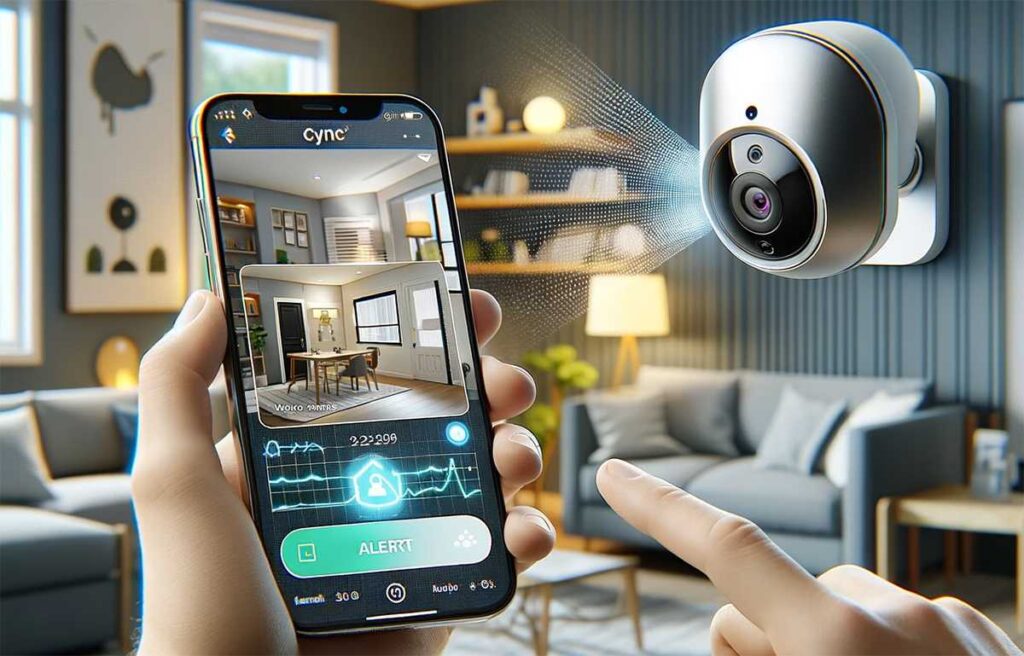Motion-activated lights are an excellent way to add convenience and security to your home. However, how does a motion activated light work? They light up when they sense motion, so the spaces are well-lit. You can use them both indoors and outdoors, and they can be adjusted to fit your needs.
What are the 3 settings on a motion sensor light? A motion activated light usually has three settings – low, medium, and high – to adjust its sensitivity to movement. Also, they detect motion and provide brightness.
It’s easy to set up motion-activated lights, if you understand the physics behind them and the settings.
Motion sensors: How does a motion activated light work
Modern security and automation systems require motion sensors. They are essential both in residential and commercial settings due to their ability to detect movement through various technologies. Each type of motion sensor has unique capabilities.
Passive Infrared Sensors (PIR):
These sensors are the most prevalent in home security systems. The sensors detect changes in room temperature, especially body heat.

Advantages:
It’s easy and reliable to detect burglars with PIR sensors. Our motion sensors use this technology to detect unwarranted movement with high accuracy.
Microwave Sensors (MW):
These sensors emit microwave pulses and measure moving objects’ reflections.
Advantages:
The MW sensor covers a wider area than PIR sensors. They are more prone to interference from objects, which can lead to false alarms.
Dual Technology Motion Sensors:
This sensor combines PIR and MW technology to provide enhanced detection capabilities.
Advantages:
As both technologies trigger, the sensor won’t alarm.
Each type of motion sensor has its strengths, making it suitable for different things. Our motion sensors use passive infrared technology, so they’re suitable for home security. These sensors work with other smart home products, enhancing security and convenience.
What are some innovative ways to use motion sensors in your home?
How does a motion activated light work. Smart homes are exciting, particularly when motion sensors are integrated with other smart devices. How to create a seamless, intelligent home system:
Get your space lit up!
Connect motion sensors to smart light bulbs, switches, or plugs. Imagine lights turning on automatically as you enter a room, hands full, or when it gets dark.
This setup isn’t just for security; it also adds convenience to your daily life. A motion sensor detects movement. When the sensor activates, the smart gadget acts.
Enhance Security with Smart Cameras:
Link motion sensors to a smart camera. If a sensor is triggered, you can instantly check what’s happening via a smart home app like CYNC, powered by Savant.

This integration offers added peace of mind, knowing you can visually verify any movement in your home.
Benefits Of Motion Sensor Lights
Enhanced security:
Your home will be safer with sudden illumination when movement is detected. They can alert you to any unexpected activity around your house, whether it’s wildlife or unwanted visitors.
Cost savings and energy efficiency:
The lights only come on when they’re needed, so they’re not wasting power. So you’ll save money on electricity bills, making them a cost-effective solution.
You’ll love it.
If your hands are full, motion sensor lights let you operate hands-free, lighting up automatically as you approach.
You’ll also be safer at night, preventing accidents in dark hallways and stairs.
Sustainable:
The lights only come on when needed, so they’re more eco-friendly.
The bulbs last longer since they’re not constantly on.
It’s versatile.
You can use motion sensor lights indoors and outdoors, in hallways, staircases, gardens, and driveways. They’re available in different styles and designs to match any decor.
How to install a motion sensor?
You can install your motion sensor yourself. Here’s a quick guide for mounting enthusiasts:
You will need a Phillips screwdriver, a 7/32-bit drill, and a tape measure screw mount.
Installation steps:
- First, remove the sensor’s plastic battery tab.
- For optimal coverage, mount it 66-78 inches off the ground.
- Mark the drill spot, drill with the 7/32″ bit and insert the anchor.
- Install the bracket flush to the wall, then attach the magnetic mount.
- Place the sensor at the desired angle.
Remember, if DIY isn’t your thing, there’s always professional installation.
How do motion lights detect motion?
A motion light detects motion using passive infrared (PIR) sensors, which measure heat from moving objects within a certain range. The motion light will turn on when a person or object passes within the sensor.
Read Also: Leviton Motion Sensor Light Switch Troubleshooting: 6 Ways To Fix
What are the disadvantages of motion sensor lights?
A motion sensor light can cause false alarms due to animals or swaying tree branches. It has a limited detection range, and can interfere with other electronic devices. In addition, some motion sensors require frequent battery replacements.
Do motion lights raise your electric bill?
Yes, motion lights will raise your electric bill, as they are constantly used. Motion lights don’t increase electric bills, and they offer additional convenience and security.
Read Also: How Do Motion Sensor Night Lights Work? Can You Use It Or Not?
In conclusion, motion-activated lights are an ideal way to save energy and increase safety and security. They’re simple to install and maintain. They work inside and outdoors in many circumstances. Motion-activated lights are affordable and save energy.
All these benefits explain why motion-sensitive lights are becoming more popular.








